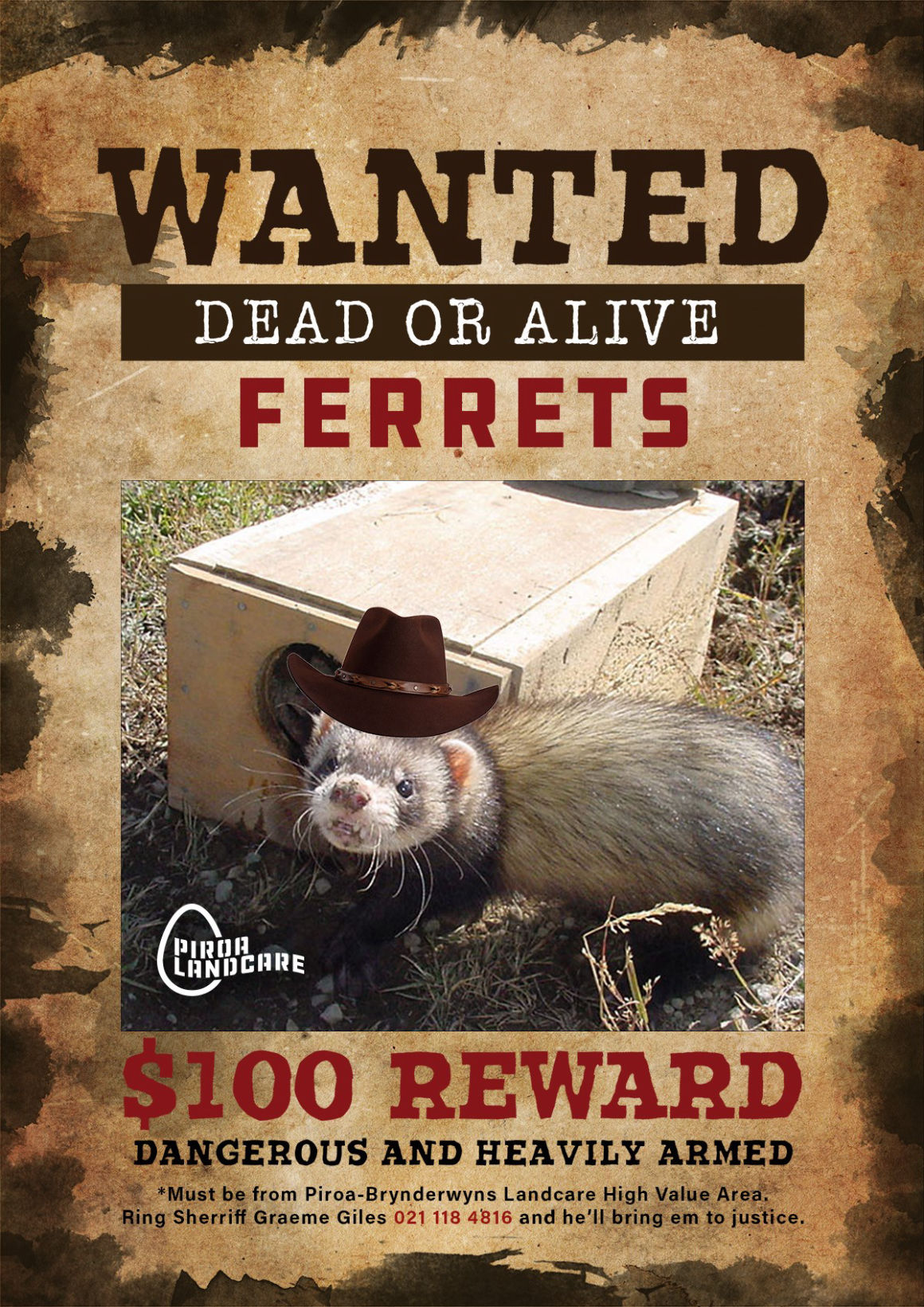Ferret Bounty $100 dead or alive!
Ferrets are a worrisome predator because they can attack adult kiwi as well as juveniles- so anytime a ferret is spotted or caught- the alarm bells go off about potential impact on the kiwi population in our backyard.
Piroa Conservation Trust (PCT) ask that the community alert them of any sightings of ferrets and the location where they saw them- so the volunteer trappers have the best chance at removing them and any other members of their family in the vicinity. Ferrets when sighted are a key menace to the survival of kiwi and other wildlife in the Piroa Brynderwyns Hills.
A $100 bounty is being offered by PCT for ferrets - dead or alive will be collected to assess age, sex and review capture site. The ferret sighting or capture must be within 5km of the PCT boundary (check our website for details on this).
A big call out to Emily and Liam who recently caught a ferret on their land at Waipu (picture attached). Both Emily and Liam are passionate about NZs native flora and fauna and improving biodiversity on their land and the surrounding area. They have had traps on their property for 18 months - a few mustelid traps and 1x live capture trap. Catching the ferret in March was a surprise as they have mainly caught feral cats and possums in the traps to date.
The success of the kiwi population in the ranges is due to the sustained hard work of locals bringing back kiwi after over 50 years of absence from our hills- but we're not out of the woods yet- we need to keep up the diligence on trapping especially with mustelids. Ferrets are readily identified with different size and markings compared to other mustelids e.g stoats and weasels.
Ferrets can cover a huge territory- but because this was a juvenile- there may well be other siblings or parents close by.
What to look for…. locals can help identify where ferrets were seen and help by adding to our trap network - email on [email protected]
The PCT response, where ferrets have been sighted, is to put in place a more rigorous trapping network - as with the recent one on the boundary of Marunui- and help raise awareness in the community of what a danger these predators present. PCT can help provide traps and show people how to use them effectively and safely. The right lure is an important part of trapping technique and a lot of research is going into new lures- meantime salted rabbit or hare and salmon skin remain favourites.
